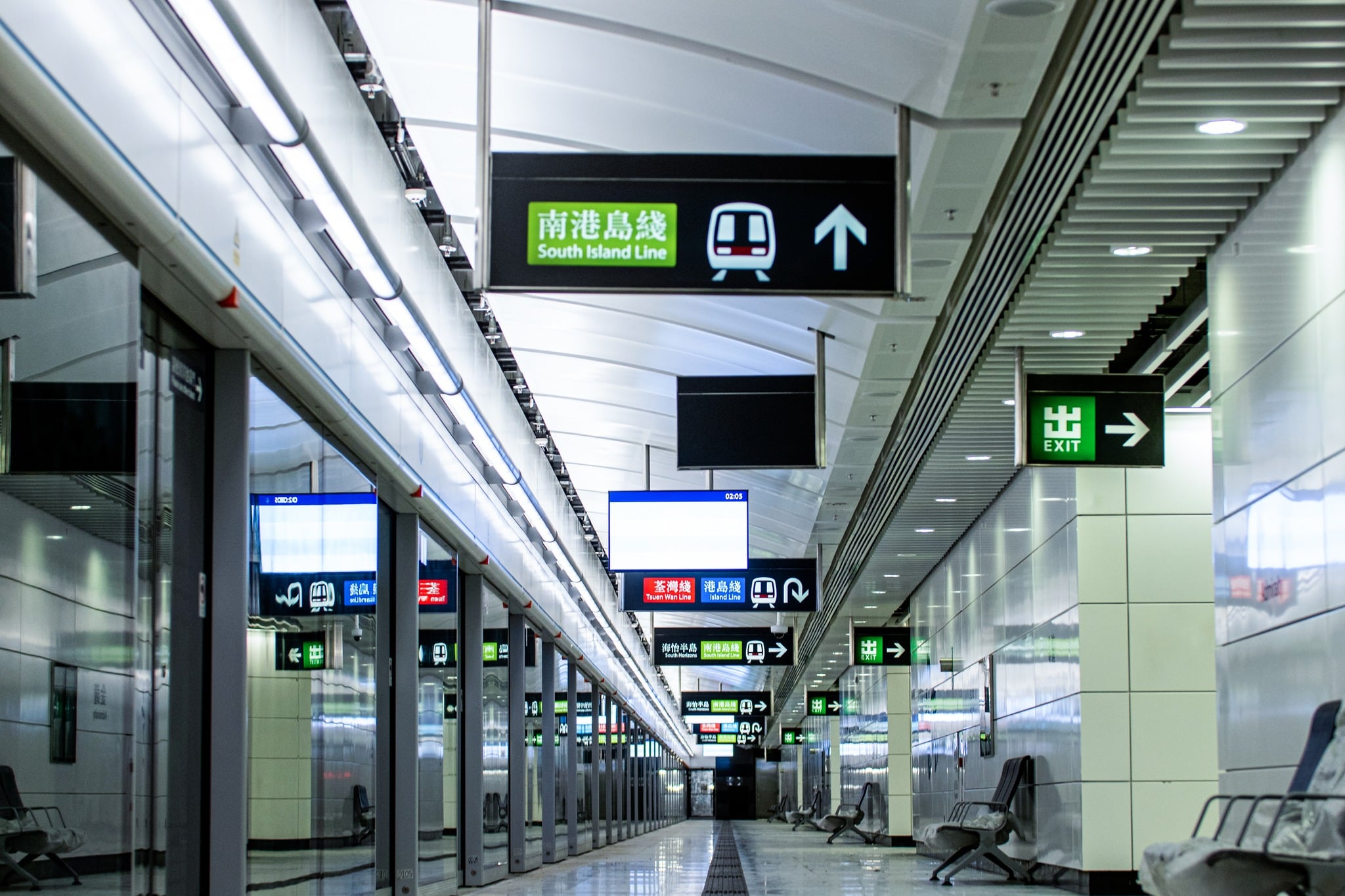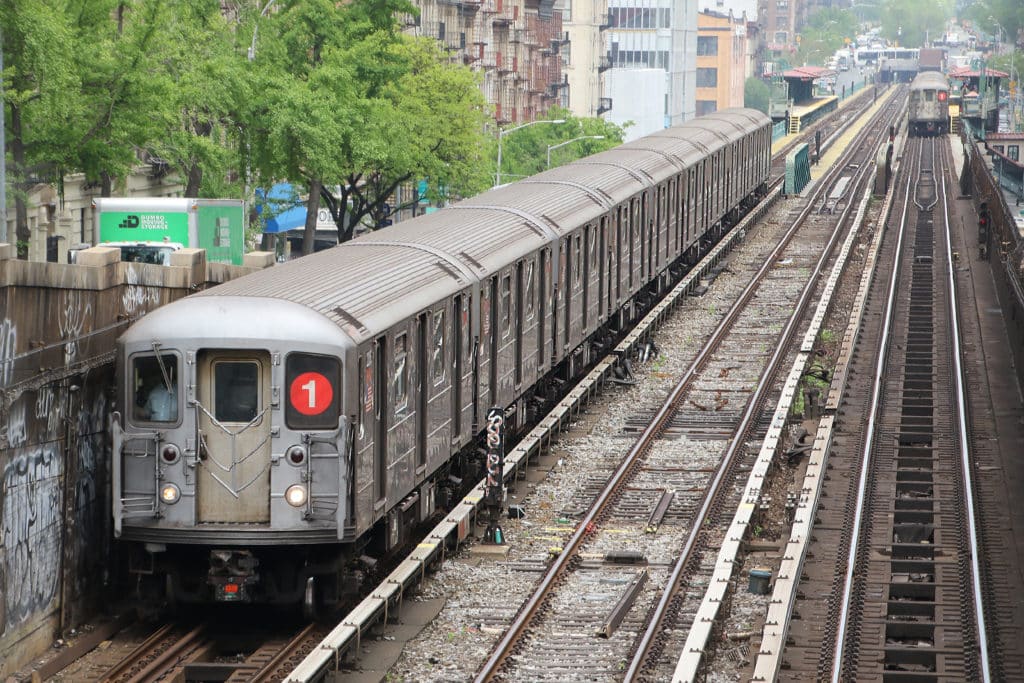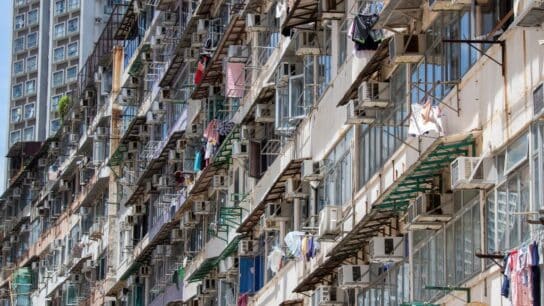It is no secret that the US is drastically behind other countries in terms of public transportation. However, once Americans begin to treat public transport as an essential resource instead of a social welfare programme, the solutions become cheaper, easier, and more effective. Spoiler alert: they do not include building expensive subway stations.
—
11:45 pm on a Friday night. I’m traveling home from Hong Kong’s Central District back to my apartment, a 45-minute commute. I’m alone, a 19-year-old female, with several bags on me and little knowledge of the city’s local Cantonese language. I scan my prepaid transportation card, enter the clean, practical station, and immediately hop onto a metro car. The journey home takes only 35 minutes, costing a total of HK$6 (US$0.77).
One year ago, I was living in Los Angeles. To visit North Hollywood, my friends and I once waited 40 minutes for a bus in the suffocating heat. 15 minutes into the US$3 ride, we had to sprint off, escaping a man who was threatening to harm us.
Why are these two experiences so vastly different?
After living with Hong Kong’s incredibly safe, efficient, and cheap public transportation network, I continue to ponder why the US is so behind in public transportation. Efficient transport is not only an environmental issue, it is also essential to the welfare of a city. It isn’t about getting everyone to ditch their cars, it’s about providing citizens a practical, greener alternative to driving. For the majority of the US population, this alternative is virtually nonexistent.
When discussing American transport with Americans, the answer is always the same. “The US is just different,” everyone says. “We’re a country of suburbs, highways, and towns; it is impossible to develop good public transportation.”
The truth is, their argument is partially correct. It’s unlikely that new shiny, expensive subway stations will make Americans ditch their cars for good. Nearly 75% of the US is comprised of suburban or rural areas, making it impractical to replicate urban transport networks like Hong Kong’s throughout most of the US. However, similarly suburban-heavy countries—such as Canada— have proven that an efficient US public transport system is possible. The answer lies in a mindset shift.
Making Commuter Rails More Frequent
The key to effective US transportation systems lies in using existing structures, such as commuter rail networks. Take the Chicago Metra Rail, for example. A network expanding into the suburbs with over 1,200 miles (1931 km) of track, the rail is almost exclusively used by workday commuters hoping to escape rush hour traffic. Fares are high (US$8-15 per trip), trips to the city center are slow, and trains typically only ride every 1-1.5 hours after 8 AM.
Instead of paying an exuberant amount to create new subway systems, Chicago (and other cities), can take advantage of these existing rail lines and turn them into high-capacity, high-frequency, low-fare routes.

Hong Kong’s Mass Transit Railway (MTR) serves nearly 5 million passengers a day. Photo: GovHK.
Sounds impossible? Ottawa did it, transforming their outer commuter rail lines into trains that arrive every 15 minutes, for a total cost of $16 million. In Munich, Germany, the underground metro system is even smaller than Washington DC’s. However, an extensive network of commuter rail—the so-called S-Bahn—rides all day every 20 minutes, offering a cheap and viable option to travel between suburbs.
Ultimately, the suburban American model makes it impractical to build a Hong Kong replica, urban-centred subway network. However, commuter rails are widely underused across the country. If remodelled, these train tracks can link suburban Americans to not only cities, but also other suburbs.
You might also like: The ’15-Minute City’ Model: Encouraging Sustainable Cities
Robust Busing Systems to Make Existing Trains Accessible
Even with a more frequent, reliable train system, how do cities transport people to these commuter rail and subway stations? Canada may have the solution.
Toronto, a car-dependent metropolis like many US cities, has created an efficient suburban bus network to feed the older subway system. Virtually every Toronto commuter lives within a 15-minute walk to a 24-hour bus station, and nearly every major road has a bus route that arrives every 10 minutes. These bus routes and subways often look like typical suburban America (Toronto’s York Mills station, for example, is surrounded by a golf course and huge houses), but they get the job done. Around 70% of the Toronto Transit Commission’s costs are covered by fares, proving that the routes have significant ridership. Although lots of Torontonians own cars, many choose to ditch them for these more convenient options.
By making use of its existing bus fleets, the US could also make transport to and from train stations, as well as across suburbia, more convenient.
Ensuring Safety, and Partnering With Businesses
Frequent commuter rails and robust bus networks are great, but here’s the problem. These options are already available in many cities across the U.S, but remain unsafe for the average commuter. In 2022 alone, the NYC subway saw 25 incidents where people were pushed into the tracks, including 2 deaths. In 2022, the Chicago Transport Association reported 491 violent crimes on the rail system. On the Los Angeles metro, I repeatedly witnessed incidents such as passengers urinating in train cars or threatening others with knives.
Ultimately, this is where the US can learn from Hong Kong’s MTR network. In Hong Kong, the subway’s (often floor-to-ceiling) glass doors shield the tracks to ensure no one falls onto them, while also maintaining quiet and clean stations. Most trains come every two minutes. Simple, understandable signage and colour-coded stations make it easy to navigate the lines. Station attendants and cameras monitor entrances, providing a sense of safety at all times of the day. WiFi is freely available, and stations and train cars boast stroller and wheelchair accessibility.
This safety and hygiene is maintained by small train fees. Hong Kong’s MTR is cheap, but it’s not free. Easy-to-use touch-and-go payment cards, which work for any of the city’s trains, buses, or trams, track distance and make payments convenient and fair.
Hong Kong’s station safety upgrades, such as floor-to-ceiling glass doors, do involve substantial funding. Moreover, the MTR’s engineering projects have been extremely costly, due to expensive tunnel digging through Hong Kong’s mountains and under its harbours (most notably, the recent Sha Tin Underwater Railway). However, through a combination of business partnerships, such as the leasing of retail shops located in every station, the Hong Kong MTR actually manages to make a profit despite high construction costs. Given its difficult geographic conditions, the MTR’s success can serve as a reminder to Americans that with proper investment, profitable transport networks are possible.
Like Hong Kong, by charging similar small fees for transportation, the US can sustain station hygiene and safety, while also preventing crime. People shouldn’t have to risk their well-being, travel in groups, or carry pepper spray to ride public transportation. This is the reality of current American stations, and without reform, we cannot work towards socially and environmentally responsible cities.
What About Small Towns?
Robust busing systems and expanded commuter rails sound incredible for further linking US cities. However, nearly 14% of US citizens live in rural areas, which makes it necessary to consider methods of expanding public transportation into more isolated areas of the country.
Ride-sharing, vanpooling, bike sharing, and even micro-transit shuttles are all options that are currently being tested across the country. Micro-transit serves as a more comprehensive, cheaper UberPool. Multiple riders, moving in the same direction, are paired into one vehicle. Unlike UberPool, however, passengers walk to “virtual bus stops” located on main roads, streamlining the pickup process and reducing detours. Smaller American towns such as South Bend, Indiana, are now testing this system.
To improve this “demand-response” micro-transit in rural areas, many countries are now using satellite imagery, drones, and smart phone data to collect information on rural ridership. The World Bank, for instance, is gathering data for the Rural Access Index using these methods.
These investments are essential for America’s small towns. Low income households, the elderly, and school-aged children are particularly limited by inaccessible transport. Although a radical transition to car-free, rural transportation is unlikely in the near future, developing these micro-transit solutions can provide solutions to vulnerable rural populations. Public transportation isn’t impossible in rural communities, but it will take innovation.
Final Thoughts
The US is an intersection of diverse traditions: religions, cuisines, languages, and more. With a little creativity, the country can apply this same diversity to its public transportation network, weaving together various countries’ public transportation models to create a unique, successful, American experience. The real question is, when will the US take initiative to start?
You might also like: We Can Save the World with Public Transportation and Not Electric Cars
—
About the Author:
Madeleine Lawler is a current undergraduate student from the World Bachelor in Business program, earning a business degree from the University of Southern California, Hong Kong University of Science and Technology, and Bocconi University. She is currently working for Encompass HK, a social enterprise which provides SDG consultancy services to organisations. In the future, she aspires to work as an environmental management consultant and eventually lead corporate sustainability policies. Outside of climate activism, Madeleine enjoys hiking, backpacking, and exploring different cultures.


















